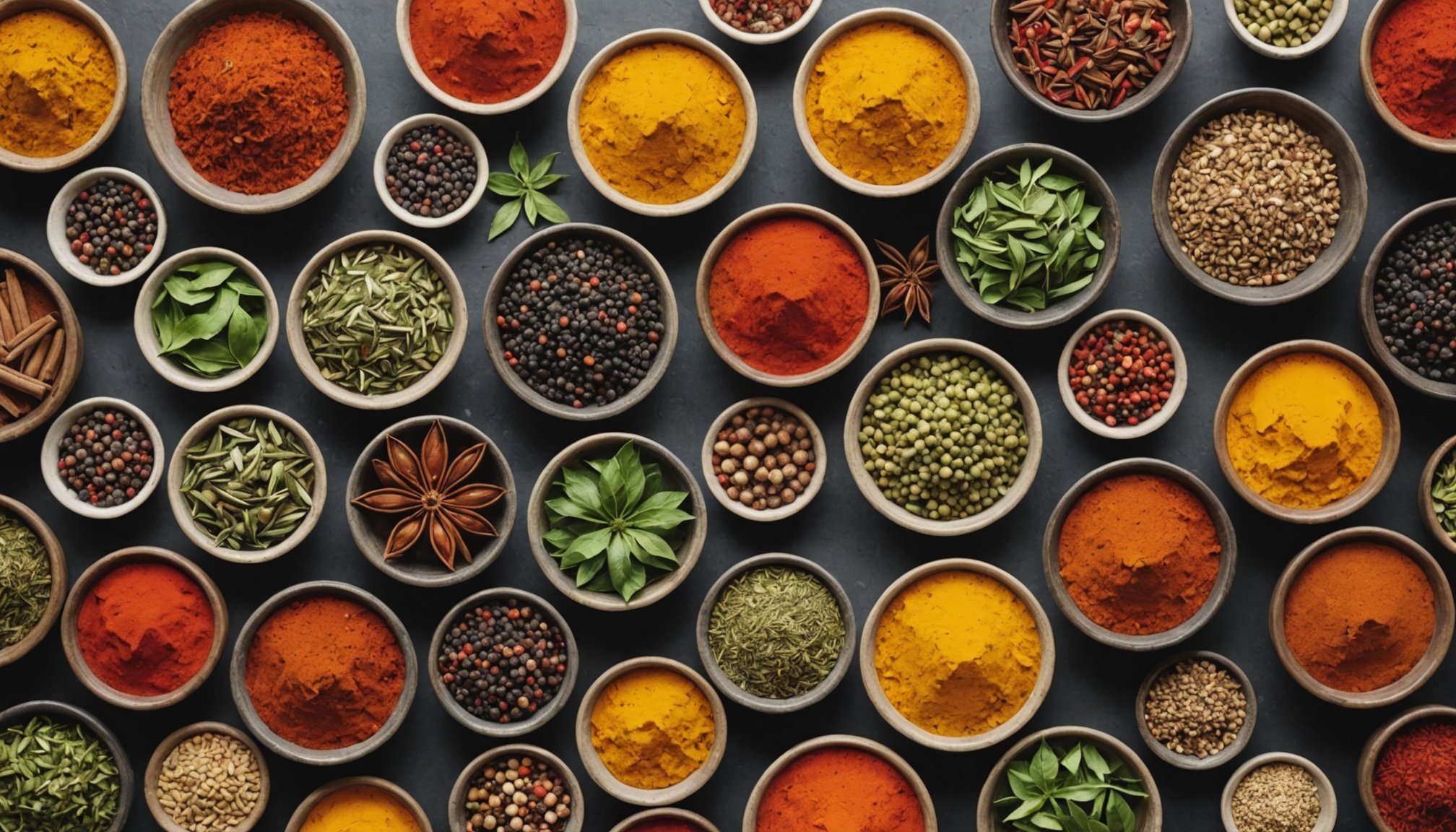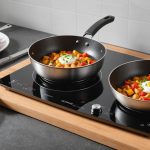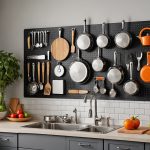Importance of Spice Organization
Organising spices efficiently can transform your cooking efficiency and kitchen management. A well-organised spice drawer saves time, allowing you to locate what you need quickly, reducing the chaos of meal preparation. No more scavenging through jumbled jars during a critical cooking moment!
Efficient spice organization not only enhances your cooking flow but also boosts the flavour in your dishes. When spices are easily accessible, you’re more likely to use them creatively, experimenting with flavours and potentially elevating your cooking to a new level.
Also to read : Key factors to selecting the ideal electric griddle for unforgettable family breakfasts
The benefits extend beyond culinary creativity. A tidy cooking environment has notable psychological effects. An orderly space encourages a clear mind, leading to enhanced focus and a more enjoyable cooking experience. Making consistent use of an organised spice drawer instills a routine, fostering a sense of calm and satisfaction whenever you cook.
In summary, maintaining a well-arranged spice organisation system is a small adjustment with substantial benefits. Your kitchen becomes a haven of efficiency and creativity, alleviating the stress common in a cluttered cooking space. Whether you’re a seasoned cook or just starting, spice organization is key to a more pleasant cooking journey.
Have you seen this : Essential electric pepper mill features every expert chef should be aware of
Best Practices for Storing Spices
To extend the longevity of your spices, proper spice storage is essential. Start by ensuring that they reside in optimal temperature and humidity conditions. Ideal storage conditions are cool and dark spaces, away from direct sunlight and heat sources. Excessive humidity can also degrade the quality of spices, so a dry environment is key.
Selecting suitable containers is crucial for maintaining the freshness of your spices. Glass, metal, or high-quality plastic containers are recommended due to their ability to create airtight seals. These seals are vital as they prevent flavour loss and keep moisture from creeping in. Avoid using cracked or loose-fitting lids, as they can compromise the spices over time.
Another aspect of spice storage involves longevity tips related to regularly checking your stock for freshness. This could be as simple as a casual sniff test or a more structured approach, such as periodic inventory reviews. By keeping spices in optimal conditions and ensuring airtight containment, you can significantly enhance their shelf life, ensuring that your culinary creations are always rich in flavour. This organized approach not only preserves spices but also supports an efficient cooking environment.
Categorizing Spices for Easy Access
A well-thought-out spice categorization system can transform your kitchen into a domain of efficiency and ease. Deciding between alphabetical and grouped categories can tailor your organizational approach.
Alphabetical vs. Grouped Categories
Alphabetizing spices simplifies specific searches but might hinder creative cooking as spices from different cuisines get scattered. Conversely, grouping by cuisine or flavour profile can inspire you to experiment, effortlessly assembling diverse dishes with harmonious flavours. This method supports creativity by encouraging intuitive combinations.
Utilizing Drawer Organizers
Organizers play a pivotal role in maintaining order. From tiered racks to adjustable dividers, varieties abound for every spice drawer configuration. DIY enthusiasts can maximize space by creating custom inserts using materials like wood or cardboard, ensuring efficient utilization tailored to your needs.
Labeling Techniques
Clear labeling fosters quick identification, enhancing ease of access and preserving your culinary rhythm. Opt for waterproof labels to withstand kitchen conditions, and be inventive—consider colour-coded systems that not only inform but also uplift the visual appeal. Creative labeling can make your spice drawer both functional and delightful.
Tracking Freshness and Expiration Dates
Efficiently maintaining spice freshness is crucial for ensuring that every dish bursts with flavour. One effective practice is to set up a maintenance routine to regularly check and update your spice inventory. Ask yourself: How often should spice stocks be reviewed? As a guideline, consider reviewing twice a year or with seasonal cooking changes.
Utilizing a checklist can streamline the process of tracking expiration dates. By systematically noting each spice’s purchase or expiry date, you can easily determine which ones require replacement. Is there a practical way to keep tabs on freshness? Indeed, marking jars with a simple label noting the date opened can be helpful.
Disposing of expired spices responsibly is as essential as routine checks. When spices lose potency, they should be discarded appropriately to ensure your collection remains fresh. A strategy for this is to incorporate regular discard sessions into your maintenance routine, targeting those spices that have surpassed viability.
Overall, adhering to these strategies will sustain quality in your spice cabinet, enhancing the culinary experiences without the fuss of stale or flavourless ingredients. With these approaches, you’re well-equipped to enjoy vibrant and tasty meals consistently.
Spice Usage Tips and Recipe Suggestions
Enhancing your cooking with the right spice usage can turn ordinary dishes into extraordinary culinary experiences. One question cooks often face is: which spices work best with various cuisines? Precision in spice selection is essential—Italian dishes often benefit from basil and oregano, while cumin and coriander elevate Spanish meals. These examples highlight the importance of choosing spices that complement distinctive cooking styles.
Experimenting with spice blends can unlock new flavours and culinary potential. Do you find yourself wanting to try something different? Begin by altering existing recipes with spice blends unique to your tastes. Consider classic blends like garam masala for Indian delicacies or herbes de Provence for a taste of French cuisine. These combinations can introduce subtle yet profound changes to familiar dishes.
To kick-start your journey, try some simple recipes that showcase common spices. Perhaps start with a cinnamon-spiced apple crisp or a garlic and rosemary roasted chicken. Both recipes allow the spices to shine, embodying the concept of flavour enhancement through balanced spice use. Approach these recipes as foundations, inspiring you to adapt and personalise them over time as you explore the world of spices.
Printable Resources for Spice Management
Simplify your spice management with printable resources that streamline organization and tracking. These downloadable aids offer a practical solution to maintaining order without fuss.
Spice Checklist
A well-structured spice checklist can transform how you manage your kitchen. By providing a visual guide, these checklists assist in maintaining a thorough spice inventory. They ensure you effortlessly track what needs to be replenished, keeping your collection fresh and up-to-date.
Management Guides
Management guides offer structured support for ensuring all aspects of spice care are addressed. These guides prioritize efficient management through step-by-step instructions covering everything from storage to categorization. Facilitating quick access to necessary information, they enable mindful decisions and prevent common spice woes.
Encouraging Usage and Loss Tracking
Printable resources bridge the gap between inspiration and action. By encouraging cooks to track spice usage and identify potential losses, these tools foster a proactive approach. Keep records of spice frequency and expiration to enhance planning and reduce waste, leading to a more efficient kitchen.
Embrace these resources to effortlessly navigate the world of spices, ensuring your culinary experiences are vibrant and streamlined.











